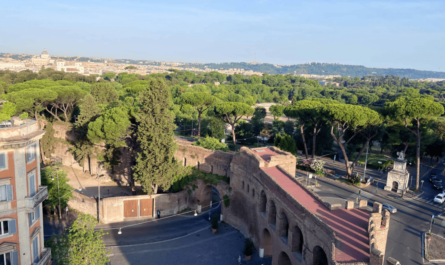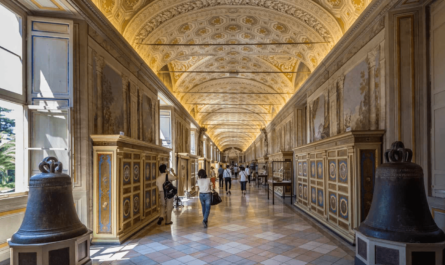Nestled between the grandeur of Samarkand and the serene mazes of Khiva, Bukhara stands as a historic gem. This ancient city, dating back over 2000 years, emerges as a tranquil oasis amidst the arid Kyzylkum desert.
Bukhara, a Silk Road treasure, is adorned with stunning mosques, towering minarets, and elaborate tilework, all highlighted by striking turquoise domes. Its old city is a maze of arches and domes, transporting visitors to bygone eras. While its plazas and arcades exude old-world charm, they also blend seamlessly with modern elements, making Bukhara, or Buxoro, a distinctive and captivating destination.
Bukhara boasts around 140 protected monuments and historic sites, serving as a living testament to its ancient past. While its architecture may not be as opulent or flashy as Samarkand’s, Bukhara possesses a unique charm and deep historical significance. Once a key hub on the Silk Road, it has long been renowned for its contributions to theology, education, and culture.
After our journey to Khiva, we spent two days exploring Bukhara. Although the time felt somewhat brief, we were able to experience all the major sights and highlights of the city.
This Bukhara Travel Guide provides insights into why Bukhara is worth visiting, the top attractions to explore, essential places to see, and other valuable tips and information for your trip.
A Brief History of Bukhara
Bukhara’s rich history spans over 2000 years. In the 6th century, it was a prominent town on the Silk Road, so influential that it drew the attention of various invaders, including the Achaemenids and Alexander the Great.
By the 9th century, Bukhara had risen to become the capital of the Samanid Empire, establishing itself as a cultural and religious hub of Central Asia. During this period, the city was a center for philosophers, scholars, poets, and scientists, hosting notable figures such as Abu Ali Ibn Sina, Muhammad Rudaki, and Omar Khayyam.
In 1220, Bukhara suffered a devastating blow when Genghis Khan’s forces invaded and obliterated the city.
The city later fell under the control of the Timurid Empire when Amir Timur conquered Bukhara in 1370.
The Shaybanid Era and Beyond
In the 16th century, the Shaybanids, of Turko-Mongol descent, seized control of Bukhara, establishing the Khanate of Bukhara. During their rule, the city emerged as a pivotal center for learning, culture, and trade. The Shaybanids commissioned the construction of over 100 madrasas, 300 mosques, and numerous bazaars and caravanserais. Many of Bukhara’s existing monuments date back to this flourishing period.
By the 18th century, the Manghits took over the Khanate of Bukhara and founded the Emirate of Bukhara.
In the 19th century, Russian forces came to dominate the city. In 1924, Uzbekistan became part of the Soviet Union, and it wasn’t until 1991 that Uzbekistan gained independence from the USSR.
Must Know Before Visiting Bukhara, Uzbekistan
When arriving in Bukhara by bus or train, you’ll reach the newer district known as Kagan, which is about a 30-minute drive from the historic city center. Taxis are readily available at the bus and train stations for the journey to the old town, typically costing between 20,000 and 25,000 UZS. Be prepared to negotiate the fare, as drivers might initially quote a higher price.
For a more convenient option, you can use the Yandex taxi app, which operates similarly to Uber in Central Asia.
Is Bukhara Safe for Visitors?
Bukhara, along with the rest of Uzbekistan, is considered a generally secure destination for travelers. The city’s manageable size and friendly residents make it easy for tourists to navigate, with locals often going out of their way to assist despite language differences.
It’s not unusual to encounter young people eager to practice their English with visitors, adding a unique and engaging aspect to your trip.
Concerns like mugging or pickpocketing are seldom encountered in Bukhara. Should you face any difficulties, the tourist police are available and known for their supportive nature.
How Many Days Should You Spend in Bukhara?
Bukhara offers a wealth of experiences, and a stay of at least two days is recommended to truly appreciate its charm. While it’s possible to see the main attractions in a single day, a longer visit allows for a more relaxed exploration.
During our two-night stay, we had ample time to discover both the historic old town and other notable sites. We arrived in the afternoon from Khiva, giving us the evening to start exploring. The following day was dedicated to visiting the key attractions and enjoying a picturesque sunset. We then took an early train to Samarkand the next morning. In just two days, we were able to leisurely experience most of what Bukhara has to offer.
10 Best Attractions to Visit in Bukhara, Uzbekistan
1. Kalyan Mosque
Adjacent to the iconic Kalyan Minaret, the Kalyan Mosque stands as the largest mosque in Bukhara. Established by the Shaybanids in 1514, this architectural marvel has undergone several reconstructions throughout its history. Serving as Bukhara’s primary mosque for over five centuries, it boasts a grand inner courtyard adorned with numerous domes and pillars.
A visit to this mosque is a top highlight in Bukhara. For the best experience, consider visiting early in the morning, ideally around sunrise.
Entry Fee: 20,000 UZS
2. Po-i-Kalyan Ensemble
The Po-i-Kalyan Ensemble stands as Bukhara’s most iconic and historically significant site. Situated in the heart of the old city, this expansive courtyard is home to the striking Kalyan Minaret, flanked by the Kalyan Mosque and the Mir-i-Arab Madrasa. The grandeur of the ensemble is truly impressive, and at sunset, the blue dome of the madrasa is bathed in a golden hue from the setting sun. Visiting the Po-i-Kalyan Ensemble is a must-do activity in Bukhara.
3. Ark Fortress or Ark of Bukhara
The Ark of Bukhara, established in the 5th century AD, stands as one of the oldest and most significant landmarks in Bukhara. This grand structure once served as a military fort and a symbol of Bukhara’s power. Today, it houses various museums, mosques, and stables.
Originally built in the 5th century, the Ark Fortress has undergone several reconstructions. It was largely destroyed by Genghis Khan in the 13th century and later rebuilt by the Shaybanids in the 16th century. It remained a residence for the Emirs of Bukhara until the early 1920s, housing up to 3,000 people and functioning as a city within a city.
Exploring the Ark Fortress can be quite absorbing. Visitors often encounter artists showcasing their work near the mosque and find the museums engaging. One of the highlights is strolling around the fortress and enjoying the panoramic views of Bukhara, especially at sunset from the top of the Ark Fortress.
4. Lyab-i-Hauz Ensemble
Lyab-i-Hauz is a serene oasis in Bukhara, featuring a central pond surrounded by a lively square. The name “Lyab-i-Hauz” translates to “by the pond” in Persian. This tranquil spot is a favorite among both locals and visitors, offering a relaxing environment amidst a cluster of restaurants, a shopping plaza, a madrasa, and a mosque.
Historically, Bukhara was dotted with ponds and stone pools that served as popular gathering spots for residents. While most of these have disappeared, Lyab-i-Hauz remains one of the few enduring examples.
Once a bustling trading square during the Middle Ages, today Lyab-i-Hauz provides a peaceful retreat. Benches around the pond offer a place to sit and people-watch.
One notable feature of the area is the Nadir Divan Begi Madrasa, distinguished by its striking blue tiles and intricate patterns, including rare animal motifs. Additionally, the renowned restaurant Lavi Hovuz is located here, making Lyab-i-Hauz a must-visit destination in Bukhara.
5. Ulugbek Madrasah
Situated close to the Po-i-Kalyan Ensemble, the Ulugbek Madrasah is a notable historical site in Bukhara. Constructed in 1417 by Sultan Ulugh Beg, the grandson of Amir Temur, this madrasah is one of the few remaining monuments from the Timurid era in the city.
Bukhara, during Ulugh Beg’s time, was known for its conservatism, yet Ulugh Beg himself was an enlightened ruler with a deep interest in astronomy. His vision was to advance science and astronomy within his empire, leading to the creation of the Ulugbek Madrasah to attract scholars and scientists from around the globe.
The madrasah was a hub for many renowned scholars, poets, and intellectuals, where subjects like mathematics, astronomy, Arabic, and science were taught with enthusiasm.
The building’s façade features intricate astral designs and geometric patterns, reflecting its scholarly focus. An inscription from the Quran on the madrasah’s gate emphasizes Ulugh Beg’s commitment to knowledge: “The pursuit of knowledge is the responsibility of every Muslim man and woman.”
6. Bolo Khauz Mosque
The Bolo Khauz Mosque is a serene spot located just a short distance from the Ark Fortress. We stumbled upon it by chance and were immediately captivated by its charm. Constructed in the 18th century with contributions from affluent Bukhara merchants, this mosque served as a local place of worship for the bustling Silk Road route connecting Bukhara and Khorezm.
The mosque is renowned for its beautifully crafted pillars and stunning ceiling frescoes and designs. We spent several moments gazing up at the intricate patterns and artwork, truly impressed by the craftsmanship.
In front of the mosque, there is a small pool where visitors often relax in the shade of surrounding trees. Additionally, just across from the mosque, the “Bolo Khauz Chaikhana” restaurant is a great spot to enjoy delicious shashlik.
7. Old Bazaars or Trading Domes
The bazaars and markets in Bukhara are vibrant and bustling hubs, reflecting the city’s rich trading history. In the 16th century, during the Shaybanid rule, Bukhara thrived as a major Silk Road trading center, with various markets and trading domes hosting merchants from Asia and Europe. Today, four of these historic domes remain: Toqi Telpak Furushon, Tim Abdulla Khan Trading Dome, Toqi Sarrofon Bazaar, and Toqi Zargaron Trading Dome.
These traditional market domes are situated around the city center, and you’ll likely encounter them as you explore. One of the most prominent is located near the Poi Kalyan Ensemble, right in the heart of Bukhara.
8. Sitorai Mokhi-Khosa Palace
A hidden treasure in Bukhara, Sitorai Mokhi-Khosa Palace is often overlooked by tourists. Situated about a 15-minute drive from the city’s historic core, this 19th-century palace once served as the countryside residence of Bukhara’s Emirs. Its architecture blends Central Asian and Western influences, with numerous mirrors adorning its interiors.
Following the fall of the Emirate in 1924, the palace was repurposed into a museum and is now known as the Museum of Arts and Crafts. If you have time during your visit, this palace offers a refreshing departure from the city’s mosques and madrasas.
Opening Hours: 9:00 AM to 5:00 PM daily
Entrance Fee: 15,000 UZS
How to Get There: A taxi ride from the city center will take you there in about 15 minutes.
9. Hammam Bozori Kord
The tradition of hammams, or bathhouses, in Bukhara stretches back to the 10th century, with references appearing in the works of Central Asian historian Narshakhi (circa 899–959 AD). These bathhouses were once popular among both the wealthy and the common people of Bukhara.
By the 19th century, Bukhara boasted 16 hammams, integral to the city’s social and cultural life. Today, only two bathhouses remain: Hammam Bozori Kord and Hammam Kundzhak.
Constructed in the 14th century, Hammam Bozori Kord remains a lively spot for locals. Situated near the Telpak Furushon dome, it requires a bit of effort to locate. Visiting this hammam offers a genuine cultural experience in Bukhara, though it is worth noting that Hammam Bozori Kord is exclusively staffed by male attendants and masseurs.
10. Chor Bakr Complex
The Chor Bakr Complex is situated approximately a 15-minute drive from Bukhara’s city center. Although it may not boast the grandeur of the Poi Kalyan Ensemble, this expansive memorial complex is a noteworthy visit if you have extra time.
Dating back to the 16th century, the complex serves as the final resting place of the Juybari dynasty, a prominent political force in Bukhara for nearly 500 years. Often referred to as the “Town of the Dead,” it spans a considerable 3 hectares.
This site also holds the tomb of Abu-Bakr-Said, one of the four descendants of the Prophet Muhammad, making it a significant pilgrimage site for many Uzbeks.
As you explore the complex, you’ll encounter various mausoleums, orchards, grapevines, and a minaret, along with a central mosque and madrasah within the necropolis.
Opening Hours:
Monday to Friday: 8:00 AM – 5:30 PM
Saturday & Sunday: 8:00 AM – 6:00 PM
Entrance Fee: 15,000 UZS
Conclusion
Bukhara is a stunning city with a wealth of sights to discover. If you’re short on time, plan ahead to make sure you visit the must-see spots. Enjoy the local cuisine, do some shopping, and immerse yourself in the vibrant atmosphere of the city to make the most of your visit. Capture the moments and create lasting memories, just as we did.
We hope you found this guide to Bukhara helpful. If you did, please share it with your family, friends, and neighbors. Don’t forget to pin it for future reference!



